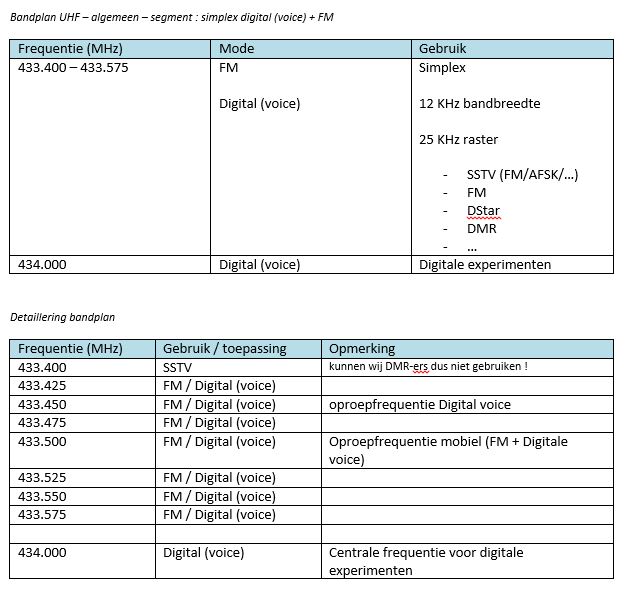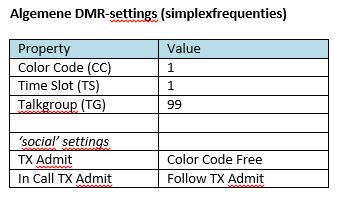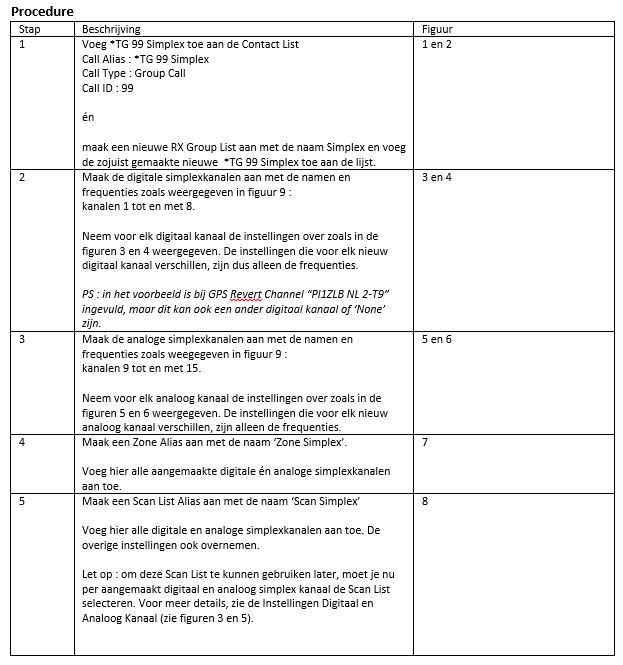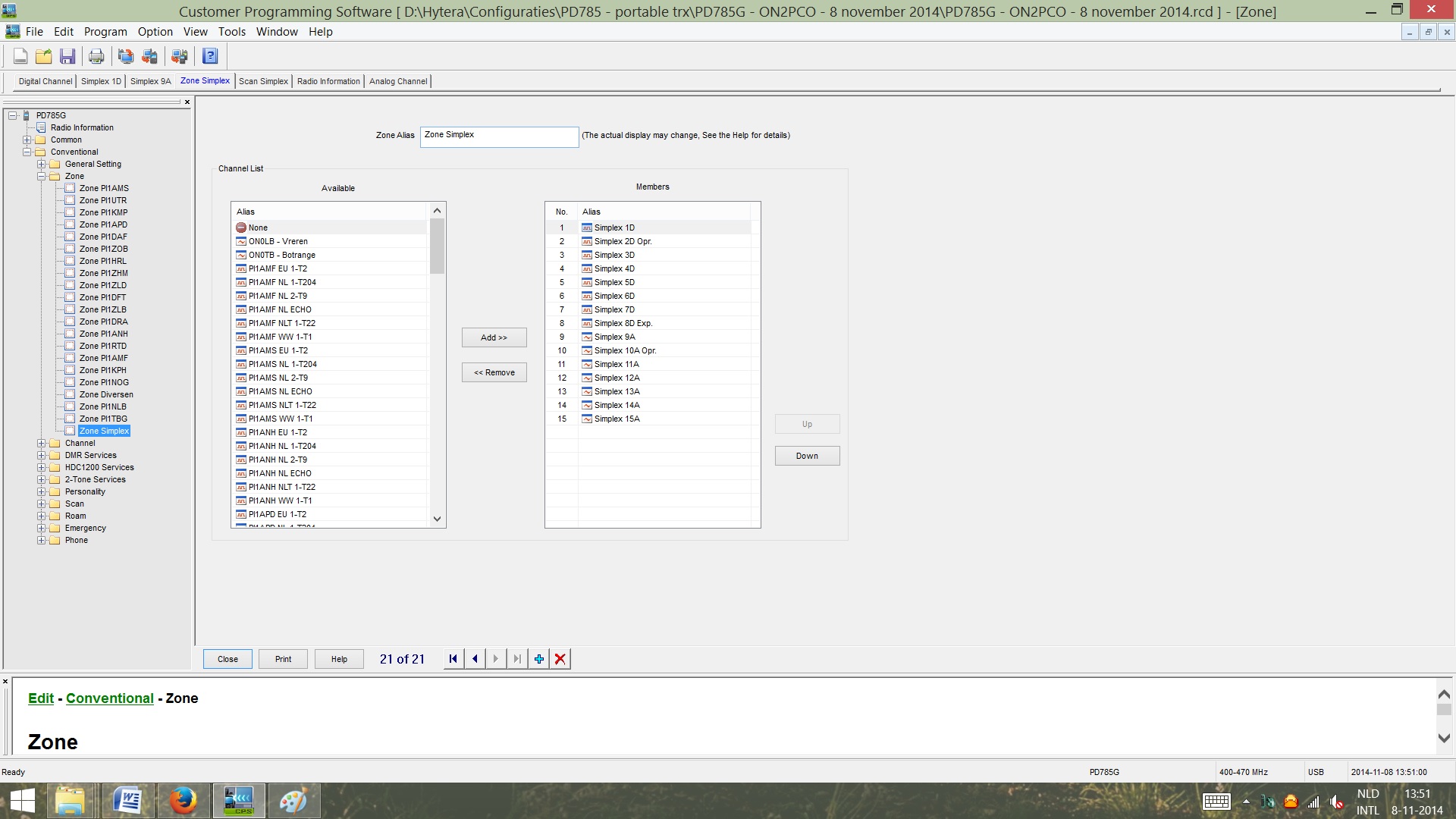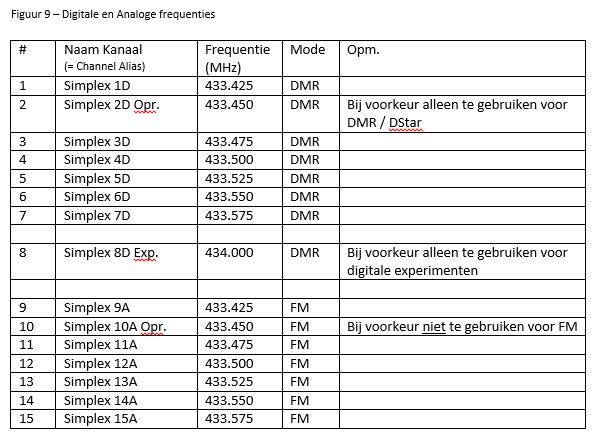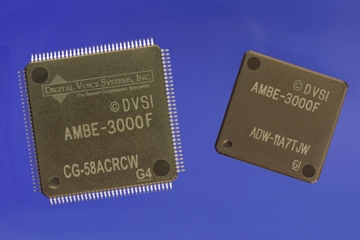 Zoals jullie eerder hebben kunnen lezen op deze site wordt de nieuwe CS7000 uitgerust met de AMBE3000R chip. Deze vocoder chip ondersteunt een groot aantal digitale modes die niet compatibel zijn maar steeds meer in de amateurwereld gebruikt worden zoals DMR, DStar, Fusion, CODEC2 en FreeDV.
Zoals jullie eerder hebben kunnen lezen op deze site wordt de nieuwe CS7000 uitgerust met de AMBE3000R chip. Deze vocoder chip ondersteunt een groot aantal digitale modes die niet compatibel zijn maar steeds meer in de amateurwereld gebruikt worden zoals DMR, DStar, Fusion, CODEC2 en FreeDV.
Gary Pearce KN4AQ van HamRadioNow heeft hier een interessant filmpje over gemaakt tijdens de Digital Communications Conference 2014 waardoor je hier meer over te weten kunt komen. Bruce Perens K6BP, de man van FreeDV, legt in het filmpje een en ander uit. Er rust namelijk een patent op het gebruik van deze chip voor DMR, Dstar en Fusion waarvoor bij gebruik rechten betaald moeten worden. Het laatste nieuws is echter dat men heeft ontdekt dat de AMBE codec al commercieel is gebruikt voordat het patent geclaimd was. Dit zou weer betekenen dat het patent volgend jaar afloopt. Iets om in de gaten te houden want ook de nieuwe UDRX-440 SDR UHF radio, gepland voor het eerste kwartaal 2015, gaat hier met behulp van een Raspberry Pi gebruik van maken.
Geef eens een “reply” op een bericht of een reaktie
 Steeds meer radioamateurs reageren op een bericht op deze website door een “reply” te geven. Wij waarderen dit enorm. Helaas zijn we niet in staat weer op de reply’s een reactie te geven. Vandaar de uitnodiging aan alle gebruikers van de website. Geef eens een reply of een reactie op een reply.
Steeds meer radioamateurs reageren op een bericht op deze website door een “reply” te geven. Wij waarderen dit enorm. Helaas zijn we niet in staat weer op de reply’s een reactie te geven. Vandaar de uitnodiging aan alle gebruikers van de website. Geef eens een reply of een reactie op een reply.
Om snel te zien wie er allemaal reply’s of reacties hebben gegeven kun je linksonder in het menu op “Reacties RSS”.
Proef met DMR-relais PI1RTD tijdelijk gestaakt
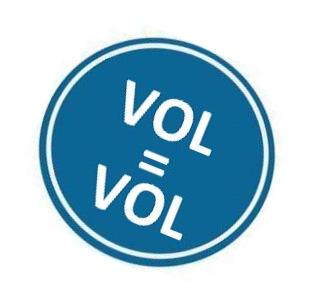 Hoewel je op de amateurbanden soms een kanon kunt afvuren, zo stil is het, wordt het toch steeds drukker in de ether. Dat blijkt wel uit het volgende.
Hoewel je op de amateurbanden soms een kanon kunt afvuren, zo stil is het, wordt het toch steeds drukker in de ether. Dat blijkt wel uit het volgende.
Om een mogelijke storing bij een andere gebruiker in de omgeving van de repeater te voorkomen, hebben we dinsdagochtend de proef afgebroken en de installatie veiligheidshalve uitgezet.
We gaan nu op zoek naar ander opstelpunt voor de DMR-repeater in Den Haag, waar deze kans op storing niet voorkomt.
Tot die tijd staat het eerdere PI1RTD-relais met een beperkter bereik weer aan.
Meer informatie vind u hier!
DMR en het gebruik van Simplex frequenties op 70cm
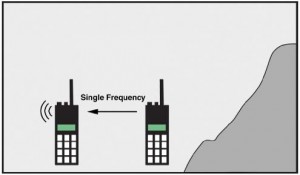 Door: Paul ON2PCO mede SysOp PI1ZLB
Door: Paul ON2PCO mede SysOp PI1ZLB
Dit artikel is hier te downloaden:
Voor degene die op 70cm in ‘digital voice’- of FM-mode simplexverbindingen wil maken of eens graag wil experimenteren hiermee, voorziet het bandplan in een speciaal hiervoor bedoeld ‘FM en Digital (voice)’-segment. Wanneer je als DMR-gebruiker simplexverbindingen wilt maken, zal je waarschijnlijk hiervoor nog kanalen moeten configureren in jouw codeplug.
Om het eenieder makkelijk(er) te maken de eigen codeplug aan te kunnen passen, tref je onderstaand de procedure aan die je moet volgen. Voor de Hytera gebruikers hebben we een uitgebreidere procedure gemaakt waarin enkele screendumps zijn opgenomen zodat je kan zien wát je wáár moet aanpassen in de codeplug. Voor degene die liever een kant-en-klare codeplug wil gebruiken, zullen binnenkort aangepaste codepluggen van PA3PM (plug PD685G al bijgewerkt) en PA3EHA beschikbaar zijn.
Voordat we de procedure uiteenzetten, volgen onderstaand eerst het lijstje van de beschikbare simplexfrequenties (=bandplan) en de algemene DMR-settings voor simplexfrequenties.
Beschikbare simplexfrequenties
Figuur 1 – Instellingen Contact
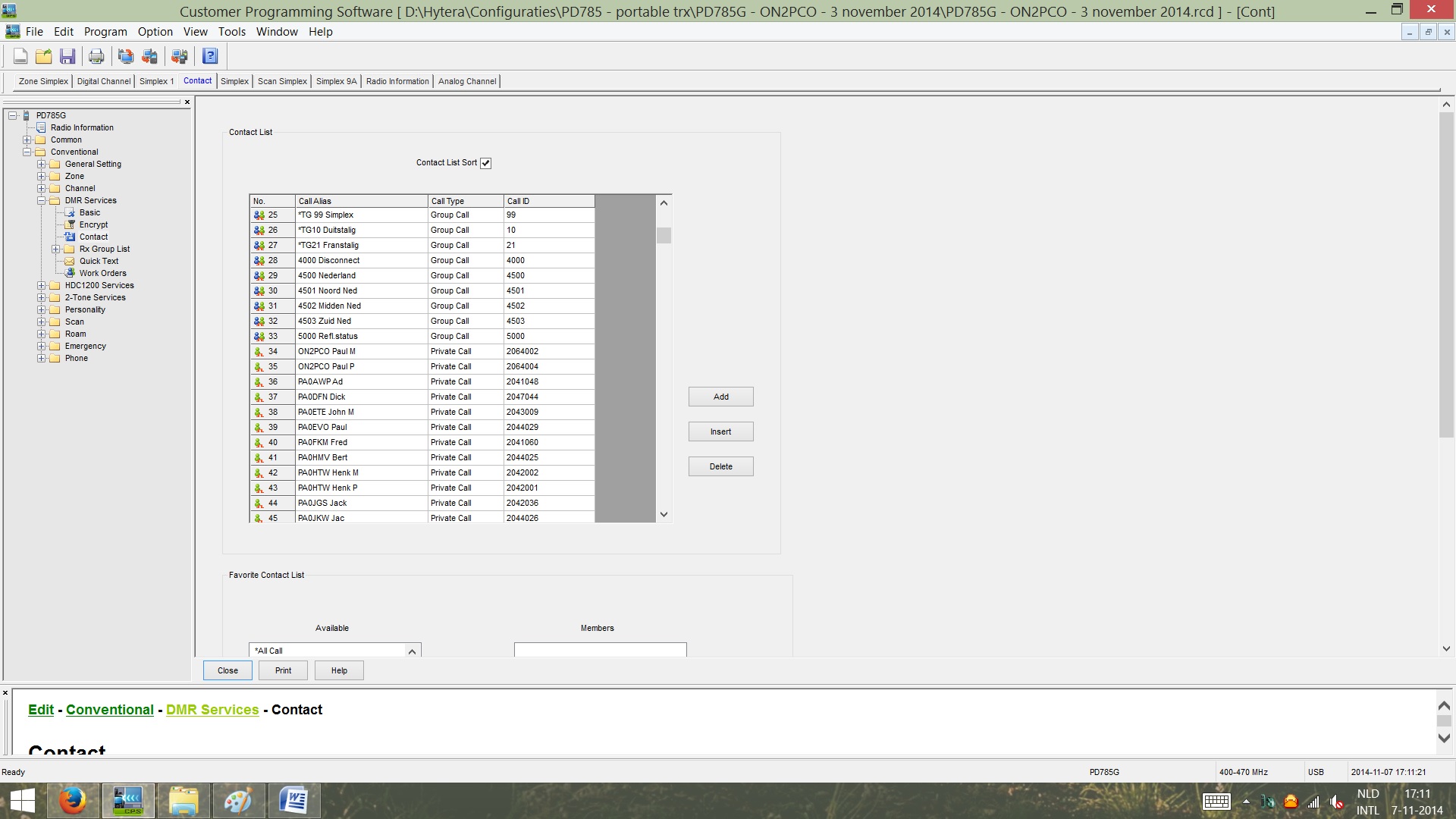
Figuur 2 – Instellingen RX Group List
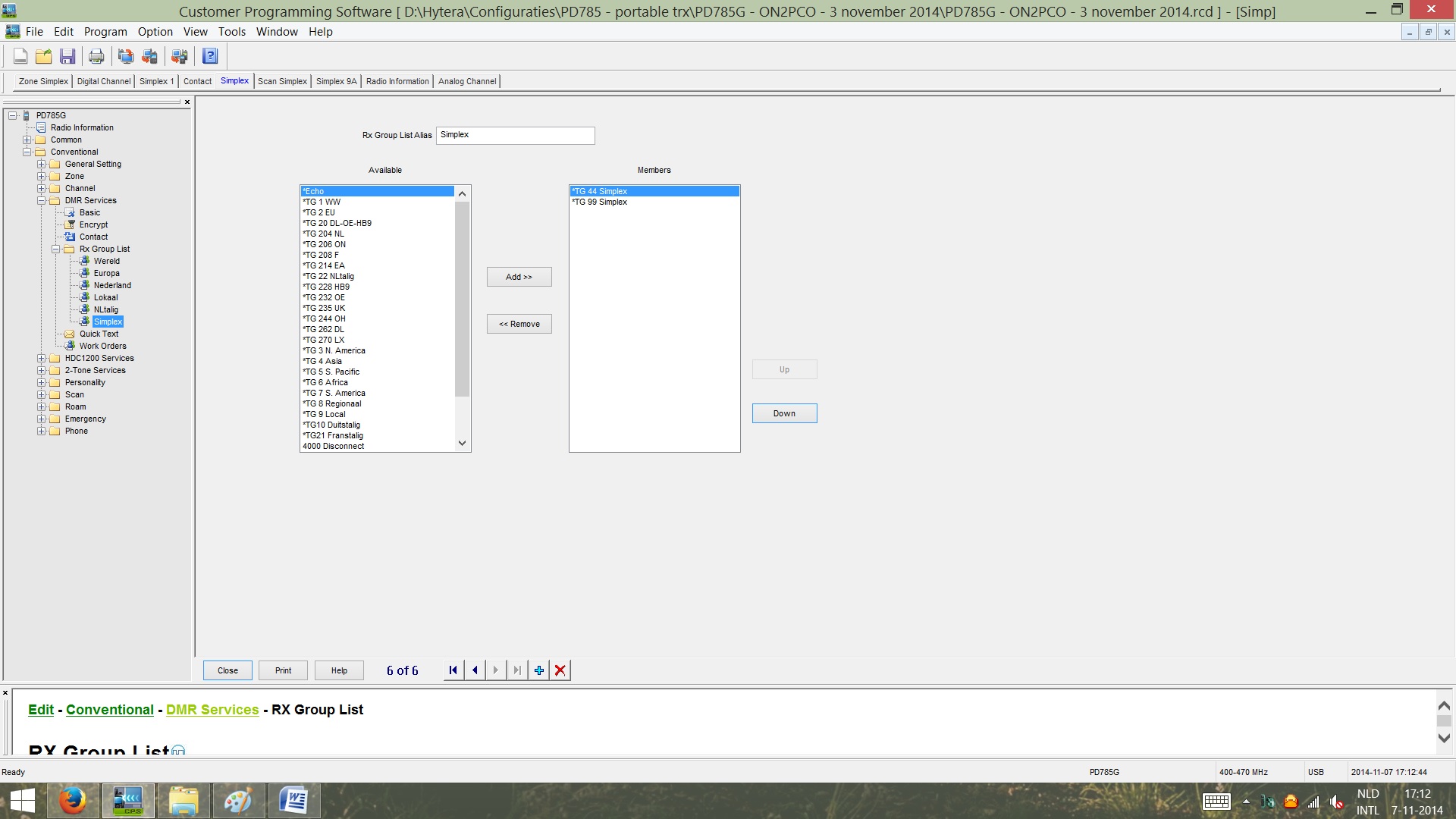
Figuur 3 – Instellingen digitaal kanaal – simplex (deel 1)
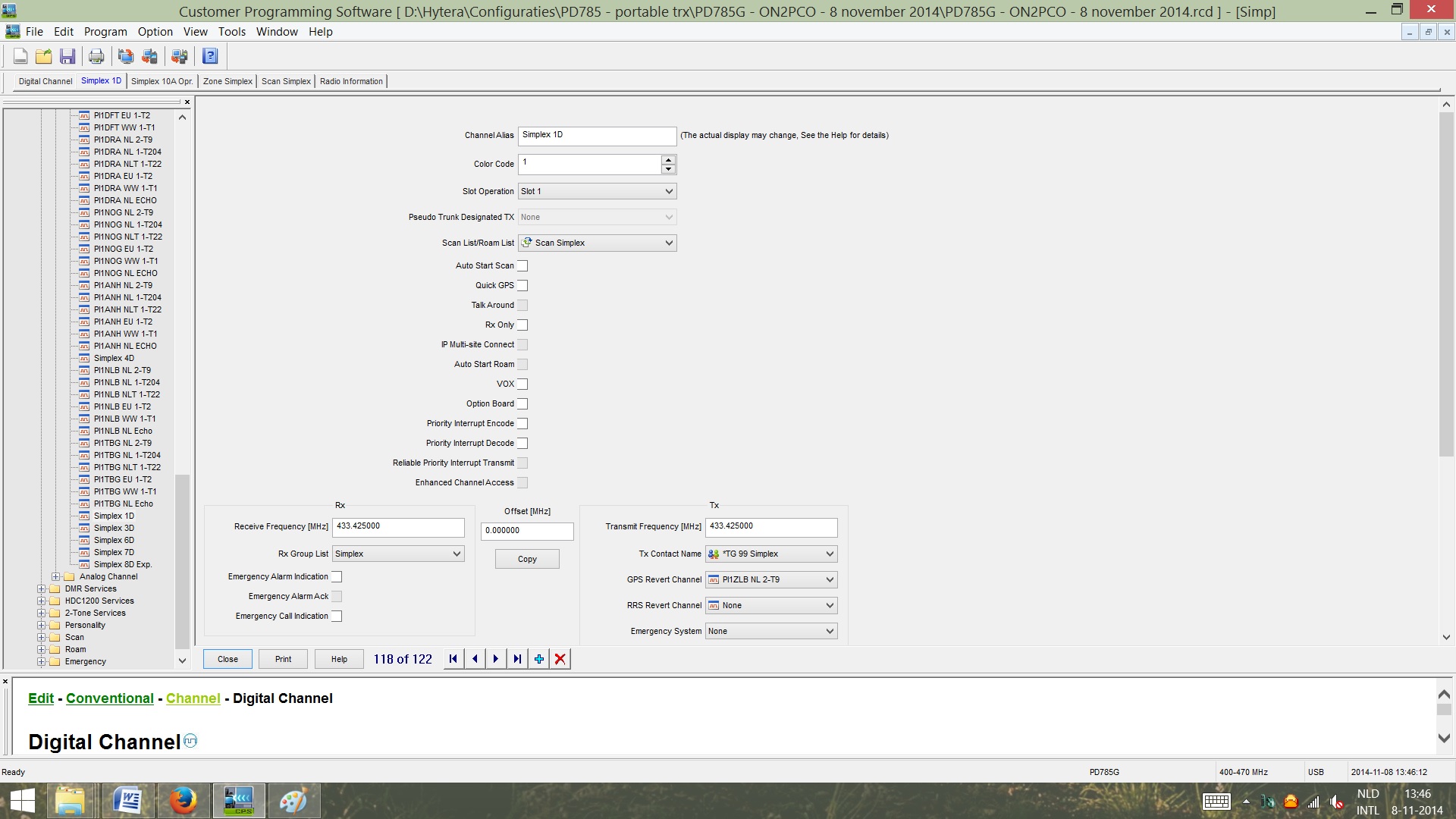
Figuur 4 – Instellingen digitaal kanaal – simplex (deel 2)
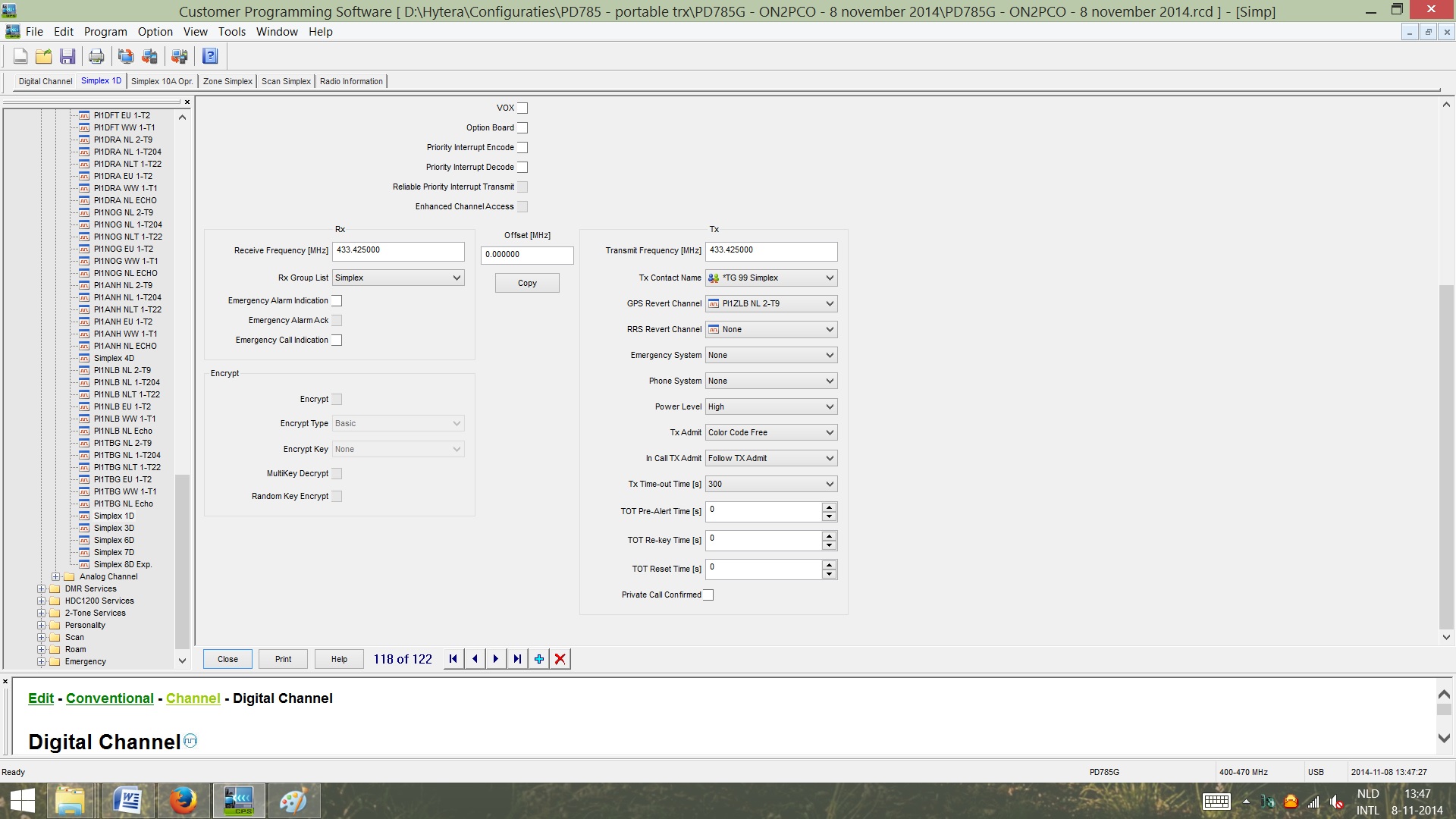
Figuur 5 – Instellingen analoog kanaal – simplex (deel 1)
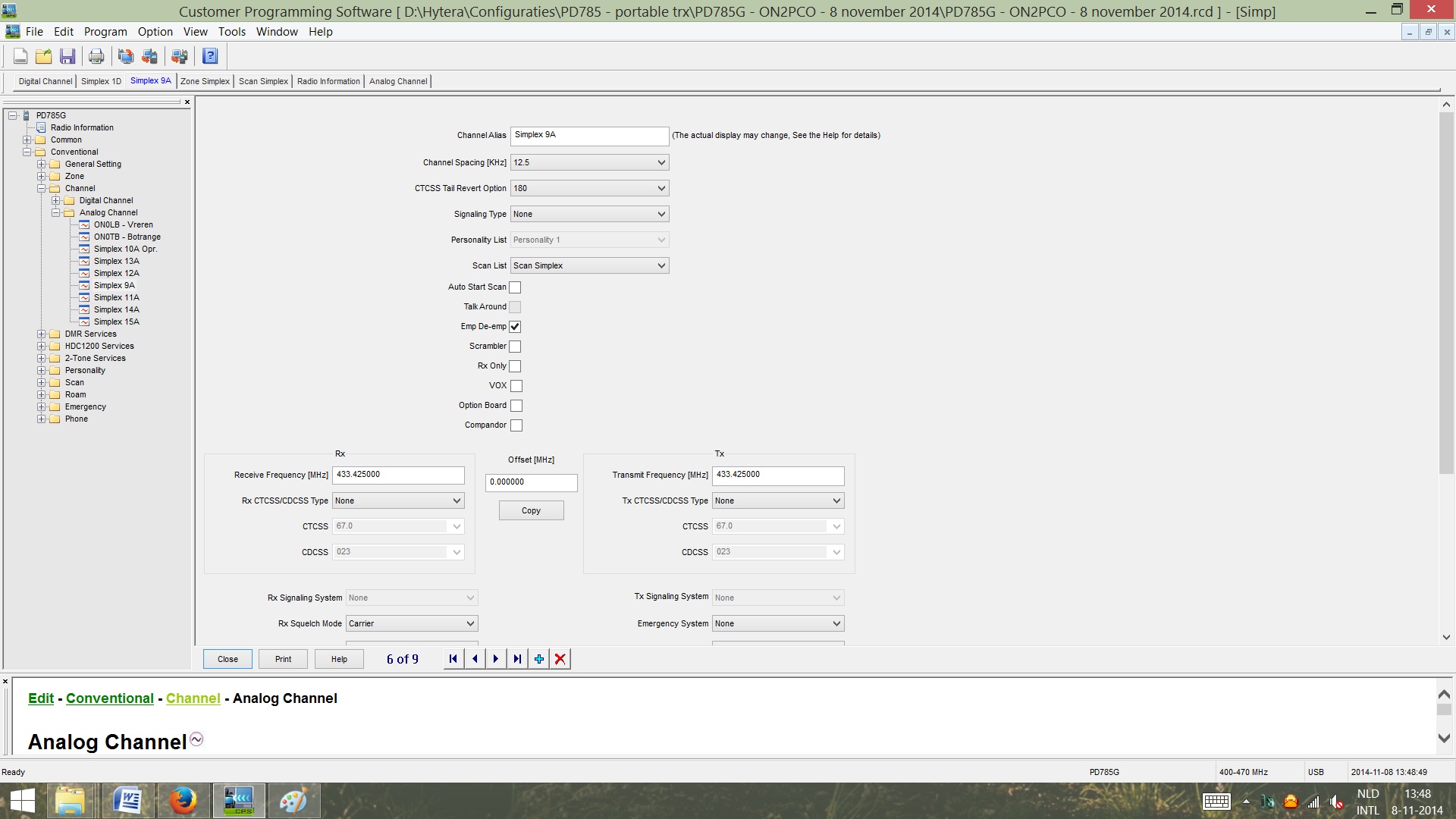
Figuur 6 – Instellingen analoog kanaal – simplex (deel 2)
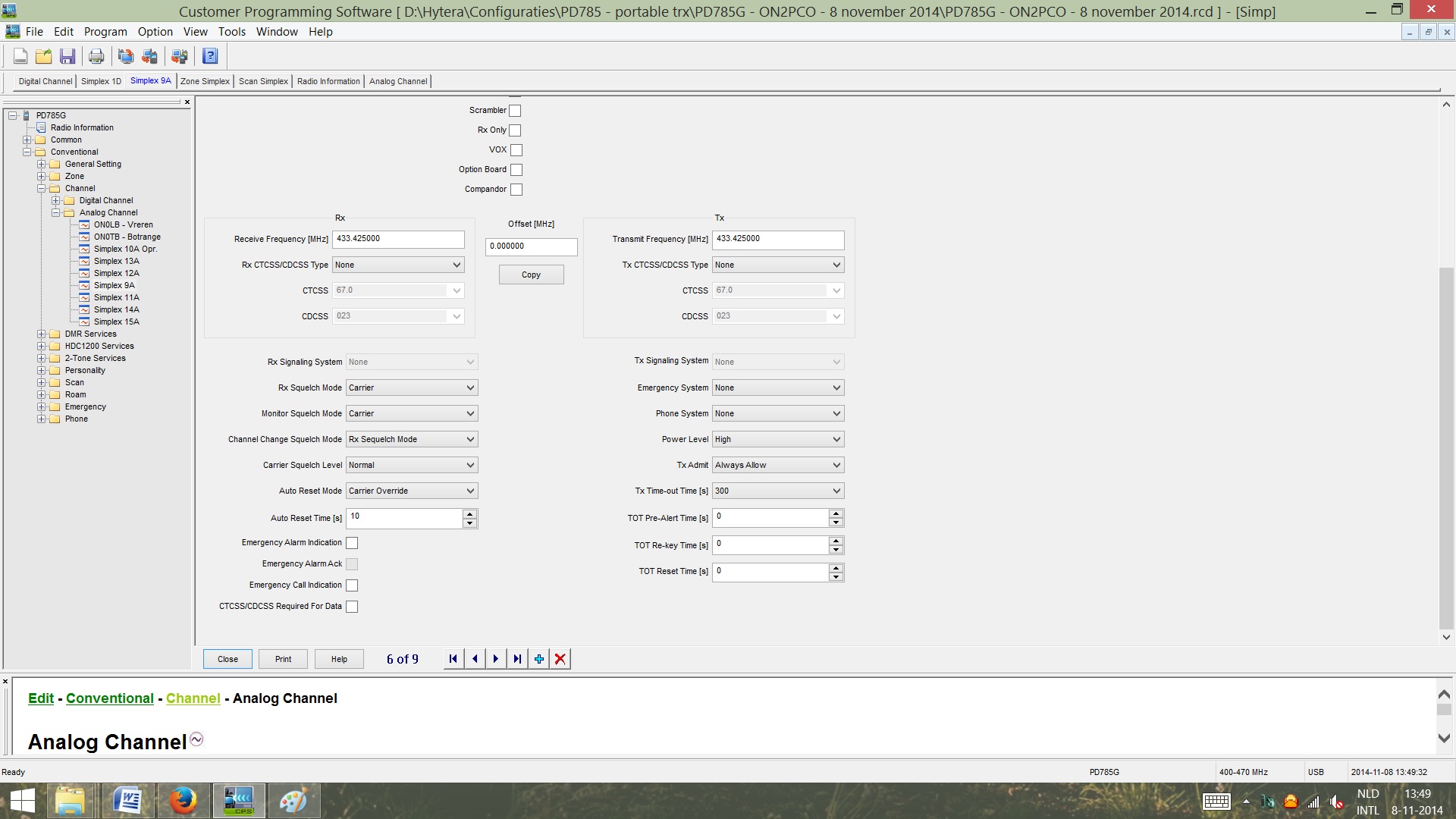
Figuur 8 – Instellingen Scan List
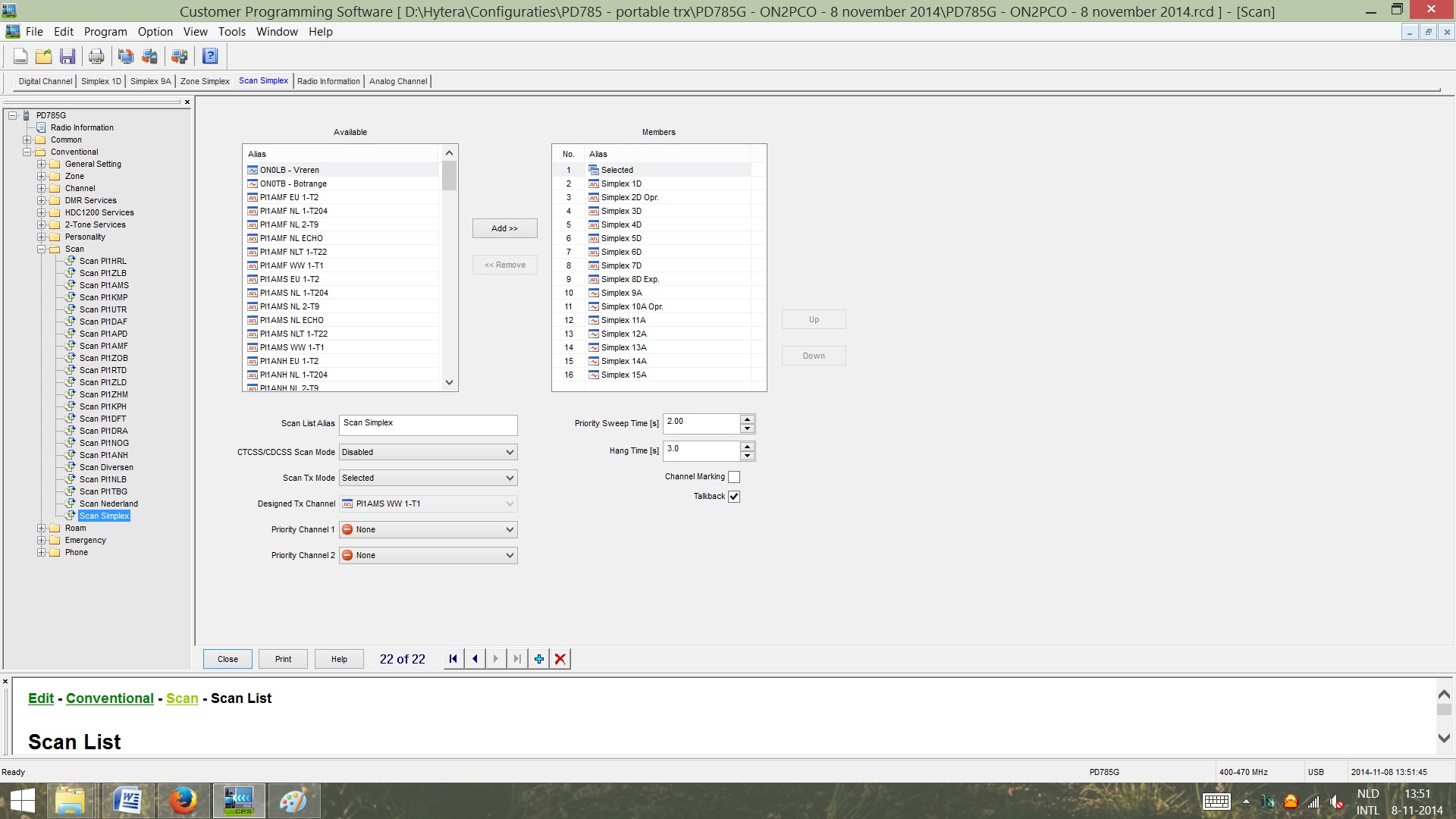
Nieuwe schema’s van de CS7000
 Vandaag en op 1 november zijn de schema’s beschikbaar gekomen van de CS7000.
Vandaag en op 1 november zijn de schema’s beschikbaar gekomen van de CS7000.
Uit de schema’s blijkt dat de CS7000 nog volop in ontwikkeling is bij Connect Systems Inc.
Het verschil tussen het schema van 1 november en die van vandaag is dat er nog wijzigingen zijn aangebracht in het schema er is namelijk een tweede filter aangebracht. Ook moeten er nog extra blocking condensators worden aangebracht. In de CS7000 wordt gebruik gemaakt van de AMBE3000R chip. Meer informatie over deze chip vind je onderaan dit bericht. De CS7000 zou eigenlijk in november uitgeleverd gaan worden maar naar nu blijkt is hij dus nog volop in ontwikkeling is. Het is dus nog wel even wachter op de uitlevering!
Wel is te melden dat de CS7000 die Dstar, DMR en analoog zal ondersteunen 249 dollar gaat kosten.
De Pdf’s van de schema’s kan je hier downloaden.
Schema 1 november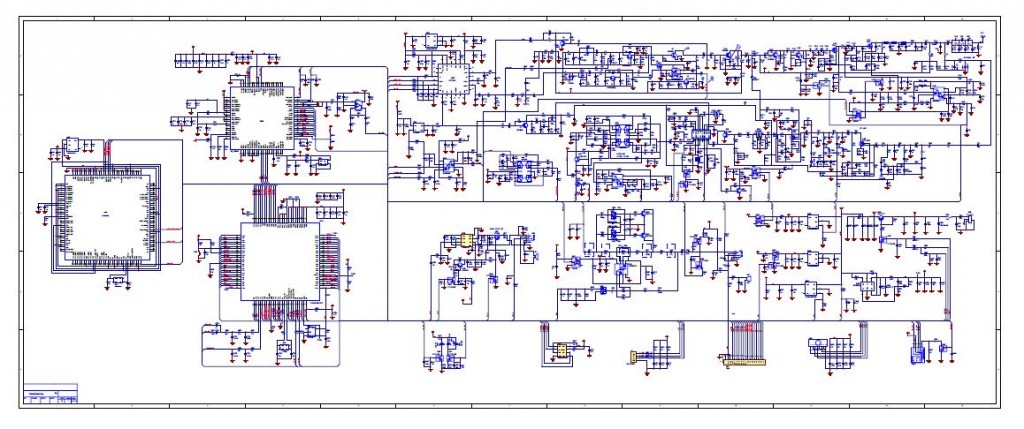
Schema 5 november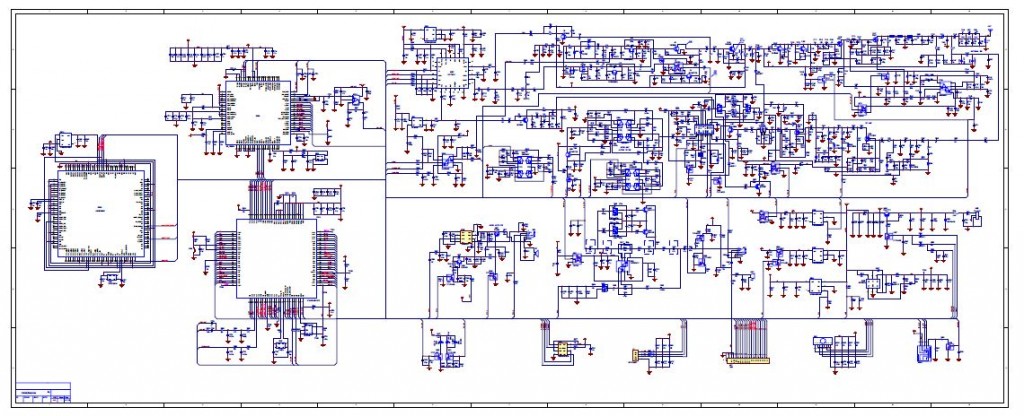
Digital Voice System’s AMBE-3000™ Vocoder Chip is an extremely flexible, voice compression solution that sets a new standard for quality, high-performance speech compression hardware. The AMBE-3000™ Vocoder Chip is a DSP based vocoder that provides exceptional voice quality at rates as low as 2000 bps. The AMBE-3000™ Vocoder Chip offers the affordability and mobility required by virtually all full or half-duplex mobile communication devices. Its superior performance and flexible design configurations makes it an ideal choice for commercial, consumer and military communication applications.
Now two versions of the AMBE-3000™ Vocoder Chip are available. DVSI has just introduced the AMBE-3000R™ Vocoder Chip which is a ROM version of the all ready popular AMBE-3000F™ Vocoder Chip. The new AMBE-3000R™ Vocoder Chip offers lower power requirements at a lower cost.
AMBE-3000™ Vocoder chip Models
There are four versions of the AMBE-3000™ Vocoder Chip available, giving designers the abilty to select the model that best meets their application requirements.
Interoperable DVSI Vocoders
|
AMBE-3000F™
|
AMBE-3000R™
|
AMBE-3000™ SAT
|
AMBE-3003™
|
|
|---|---|---|---|---|
| AMBE-2000™ Chip Rates | YES | YES | YES | YES |
| AMBE-3000™ Chip Rates | YES | YES | YES | YES |
| MotoTRBO | YES | YES | YES | YES |
| DMR | YES | YES | YES | YES |
| dPMR | YES | YES | YES | YES |
| D-STAR | YES | YES | YES | YES |
| NXDN | YES | YES | YES | YES |
| APCO Project 25 Half Rate | YES | YES | YES | YES |
| APCO Project 25 Full Rate | NO | NO | NO | NO |
| TerreStar | NO | NO | YES | NO |
| MexSat | NO | NO | YES | NO |
| GlobalStar | NO | NO | YES | NO |
The AMBE-3000™ Vocoder Chip implements DVSI’s patented AMBE+2™ Voice Compression Algorithm. The AMBE-3000™ Vocoder Chip can operate at virtually any data rate from 2.0 to 9.6 kbps. This allows designers to optimize speech and/or FEC rates within their system requirements to provide excellent voice quality with superior robustness to bit errors and acoustic background noise. The success of this vocoder technology has resulted in it being chosen by many mobile radio manufacturers including APCO Project 25 in North America and DMR in Europe. In addition, satellite systems prefer this technology because of its superior voice quality at low bit rates.
By incorporating this advanced vocoder technology, into proven DSP technology the AMBE-3000™ vocoder chip achieves a level of performance and reliability typically associated only with customized ASICs but without the associated risks and high development costs. With small quantity, off-the-shelf availability and no licensing fees or royalties, engineers and original equipment manufacturers are able to efficiently design and affordably produce high performance, narrowband, communication equipment.
Two versions of the AMBE-3000™ Vocoder Chip are available. The AMBE-3000R™ Vocoder Chip ROM version offers lower power requirement at a lower cost. Where as, the AMBE-3000F™ Vocoder Chip Flash version offers a few extra features that maybe useful in certain applications.
Operation
To allow for easy integration, basic communication to/from the AMBE-3000™ Vocoder chip is designed to be as flexible as possible. The AMBE-3000™ offers users four separate physical interfaces: SPI (speech data samples interface only), McBSP serial port, UART, and a parallel port. Selecting the interface that best fits system requirements is made easy with two operating modes.
In Codec mode the AMBE-3000™ Vocoder Chip is configured to transmit and receive digitized speech to and from most linear, a-law, or u-law A/D-D/A codecs through either its SPI or McBSP serial port and the compressed channel data uses one of the remaining interfaces. Alternatively, the AMBE-3000™ Vocoder chip can be set-up to operate in packet mode, where both the speech and compressed channel data are on the same interface. Packet mode also allows for vocoder configuration, vocoder status information, as well as, the transferring of speech and compressed data bits to/from the chip’s internal encoder and decoder.
The AMBE-3000™ chip boasts numerous advanced design features such as automatic Voice/Silence Detection (VAD), noise suppression, adaptive comfort noise insertion (CNI), DTMF and Call Progress Tone detection/regeneration, echo cancellation, low power modes and frame-by-frame “on-the-fly” rate switching. Additionally, the chip includes variable rate Forward Error Correction (FEC). The built-in FEC combines block and convolution codes with up to four bits of Viterbi soft decision decoding. The quality of this FEC provides exceptional robustness to background noise and intelligible speech in degraded channel conditions, even with bit errors (BER) of up to 20%. This level of performance can lead to the successful development and deployment of wireless communication systems in the most demanding environments.
These features, combined with the chip’s low power consumption and small form factor (128 pin LQFP of BGA package), make the AMBE-3000™ Vocoder Chip an ideal solution for wireless applications where bandwidth is at a premium and low-data-rate, high-voice-quality is imperative. As the latest addition to DVSI’s family of voice compression products, the AMBE-3000™ has interoperable modes that provide a seamless migration path from systems already using DVSI’s AMBE-2000™ and AMBE-1000™ Vocoder Chips.
The value of DVSI’s AMBE® Voice Compression Technology goes beyond low bit rate and voice quality. It has been thoroughly evaluated and tested by international manufacturers under various conditions using a variety of languages. This assures the user is getting the best vocoder available and makes the DVSI vocoder the logical choice without the need for additional comparison tests. Plus the fact, that DVSI’s Voice Compression technology has been implemented worldwide for more than 19 years, delivers the added security of a field proven technology that can play a key role in making any communication system an overall success.
Block Diagram AMBE-3000™ Vocoder Chip in codec mode
Click for Enlarged Block Diagram
High Quality Performance
- DVSI’s latest AMBE+2™ Vocoder Technology
- Excellent voice quality – even at low data rates and in harsh background noise environments
- Reliable channel communications with Improved Error Mitigation and Soft Decision FEC Decoding
Design Flexibility/Low Cost Integration
- Complete integrated vocoder in one chip
- Supports data-rates from 2.0 kbps to 9.6 kbps
- Maximizes channel bandwidth efficiency
- Works with most low-cost A/D-D/A codecs
- Selectable Serial or Parallel interfaces
- Order as needed – no licensing fees or royalties
- Off-the-shelf availability for quick delivery
Optimized for Digital Mobile Radio Systems
- Excellent performance at low data rates and harsh environments
- Robustness to acoustic background noise and channel bit errors
- Small compact package design (128 pin LQFP or BGA)
- Compatible with DMR Program (ETSI TS102)
